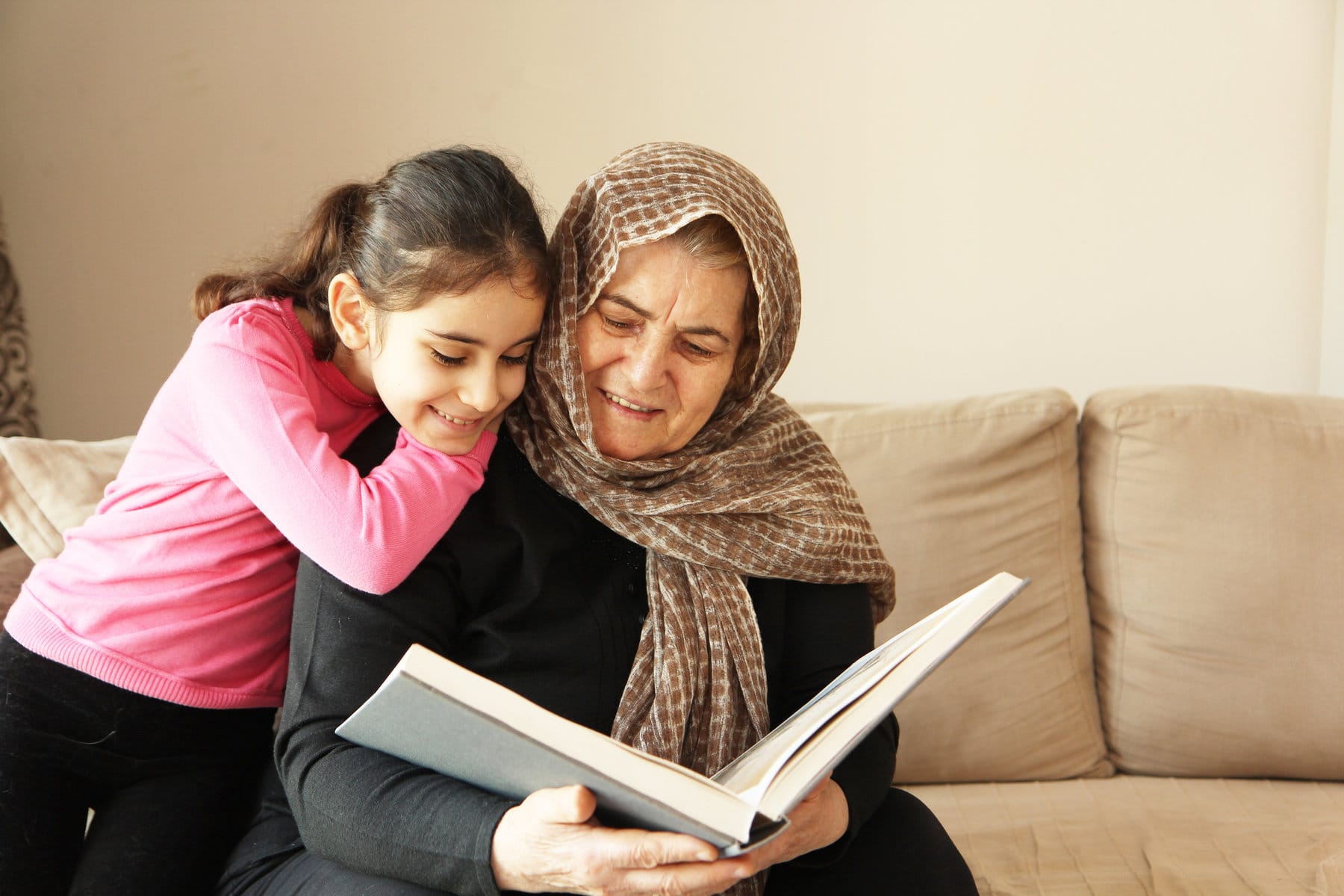As a child’s first teachers, families play a huge role in developing a child’s relationship to reading. From reading bedtime stories to checking out library books together, children learn new words and get excited about books when they listen to family members read aloud.
Families know that reading is important, yet when it comes to teaching your child how to read, parents and caregivers often struggle with knowing how to instruct their children. Do you start with identifying letters or sounds? Should children recognize whole words first, or the sounds that make up words?
We’re breaking down the basics of how to teach your child to read, thanks to former Waterford Vice President of Curriculum and current National Early Learning Advisory Council member Julie Christensen. Below are Julie’s tips for:
- Teaching your child with science as your guide
- Understanding essential reading skills and strategies
- Nurturing a multilingual learner’s progress at home
The Science Behind How We Learn to Read
Did you know that learning to read actually changes a child’s brain? Researchers who study how children learn to read have discovered that while our brains are naturally good at learning how to speak, learning to read isn’t as easy. Babies learn to talk just by listening to people around them and recognizing patterns over time—but our brains aren’t born knowing how to read. We have to learn it intentionally, one step at a time.
“Our brains are not pre-wired for reading,” Julie explains. “We cannot learn to read by seeing other people do it.”
Because reading doesn’t come naturally like talking does, teachers and families must work together and coordinate what the child will learn, and in which order. Thanks to the science of how kids learn to read, we know that basic reading skills fall into two main categories:
- Word recognition: recognizing the words on the page
- Language comprehension: understanding what words mean
Word recognition and language comprehension work together to help children follow stories and gain information as they read. To reach both milestones, children need to learn specific skills along the way. Here are the skills that contribute to a child’s ability to recognize words and understand what they mean.
Word Recognition Skills
Children learn how to recognize words by learning the following skills:
Phonological Awareness
This skill teaches children to notice the smaller sounds that make up words when they are said aloud.
Tip: To practice this skill, play sound games with your child. For example, you could ask them to identify words that start with the same sound or make up a rhyme.
 Phonics
Phonics
Phonics skills are an essential part of teaching a child to read. They help children learn to connect the sounds they hear in words to the letters on the page.
Tip: Use these printable letter cards to practice connecting letter shapes with their names and sounds with your child. As Christensen suggested, “It’s really helpful [for phonics development] to practice the name, the sound, and the shape of the letter altogether.”
Reading Fluency
This means being able to read words accurately, clearly, and at an appropriate pace or speed.
Tip: To practice fluency, read aloud to your child often. This not only gives them a model for fluent reading but also builds vocabulary skills.
Julie says, “When you enjoy a book with your child, they’re hearing you read with fluency. And this is a powerful example for your child.”
Language Comprehension Skills
Children learn how to understand what words mean by learning the following skills:
Comprehension & Vocabulary
Comprehension is when children understand the concepts behind what they read, and vocabulary skills refer to the words a child knows and can use in a sentence.
Tip: Ask your child questions before, during, and after you read a book together. After finishing the book, hold a conversation about new words, facts, and ideas your young learner noticed. The more words children know, the better they can understand what they read.
Language Concepts
This includes skills like knowing that we read from left to right and how to turn the pages of a book.
Tip: When reading with your child, try pointing to words as you read them. This helps reinforce the direction of reading from left to right and that each word represents spoken language.
Communication
Communication includes writing, listening, and speaking skills to share ideas and opinions with others.
Tip: Practice having back-and-forth conversations with your child. As they talk, try to expand on their ideas and introduce new vocabulary words.
“These kinds of interactions are really purposeful. When we’re really giving our full attention to these kinds of interactions, we are helping our children become literate,” Julie explains.
Supporting Multilingual Learners at Home
For families raising bilingual or multilingual children, Julie encourages families to embrace multiple languages. “[Bilingualism or multilingualism] is a gift. It is an advantage. The research shows that actually, it’s so good for your brain as you age later in life, too,” she says.
Tip: If you speak multiple languages at home, read your child books and complete activities in every language they are learning. The more exposure they get with reading in all languages they speak, the more their overall literacy skills will improve.
Make Reading Together Fun and Part of Your Routine
No age is too early to start supporting your child’s literacy journey. Even babies can benefit from hearing language, seeing books, and having back-and-forth “conversations” with their family members.
The key is to make these learning experiences fun and natural parts of your daily life. Julie says, “Putting the science of reading into practice in your home with your child can actually be simple and a lot of fun… [it involves] embedding playful experiences into the regular day-to-day interactions that you already have in your home.”
By trying these science-based recommendations, families can help set their child on the path to becoming a confident, lifelong reader. Every child learns at their own pace. The most important thing is to keep being upbeat and supportive, which encourages children to become lifelong readers. As Julie says, “Every step is cause for celebration.”
For more support teaching your child how to read, apply for Waterford Upstart: an online early learning program designed by educators and backed by decades of research. PreK-2nd grade children receive instruction in reading, math, and science that responds to their current skill levels and challenges. Kids will enjoy engaging songs, books, and interactive activities that build a strong foundation for their future success.
Use the program anywhere your child learns—at home, school, or in the community. You’ll get our full support with coaching, tips, a library of resources in English and Spanish, translation services, and even a computer and internet access. It’s easy for you, educational and fun for your child, and there’s no cost for families who qualify.
Learn more about Waterford Upstart.
Andy Minshew is an educational content writer for Waterford.org. He has developed articles, ebooks, help instructions, and other Waterford resources for educators and families since 2018. He is also an Audiofile Magazine reviewer and a librarian advisor for EBSCO NoveList. He loves visiting art museums, participating as a member of the Tolkien Society, and hiking with his family.




